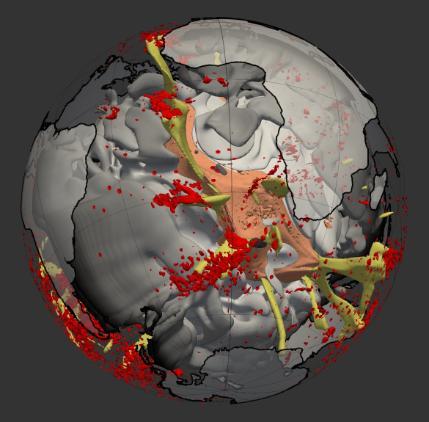May 17, 2023
New research tracks the movement of minerals and diamonds within the Earth’s mantle
New models show dynamics of deep mantle flows to predict where diamonds may occur
Research published in Nature Geoscience by University of Wollongong (UOW) Associate Research Fellow Dr Ömer Bodur and Associate Professor Nicholas Flament of the School of Earth, Atmospheric and Life Sciences has tracked the movement of heat within Earth’s mantle to predict kimberlite eruptions that carry diamonds from the deep Earth to the surface.
The global mantle flow models developed by Bodur and Flament reveal that Earth’s deepest mantle and the surface are connected by broad mantle upwellings - pillars of heat that carry material from the base of the mantle to the surface. These upwellings can trigger kimberlites, small but powerful volcanic eruptions that often contains diamonds.

The models also show that at the centres of these pillars of heat, Earth’s mantle flows upward much faster so that it can carry dense basal mantle material, creating different chemical compositions between the kimberlite samples.
Dr Bodur said the research showcases how Earth’s mineral resources, in this case diamonds, can be prospected in space and time using global mantle flow models.
“The models we have developed may also be used to predict where other mineral deposits may form. This opens opportunities for the minerals industry mitigating their risk in continental-scale exploration.”
Up to now, Geoscience Australia has been providing mineral potential maps that are based on geological and geophysical data to help industry to decrease their risk associated with minerals exploration. The new models developed by Bodur and Flament provide diamond potential maps supported by a geodynamic model.
This work comes at a time when reliable physical models of Earth’s interior are more important than ever. Investigating minerals that will facilitate the world’s transition to green energy using global mantle flow models has become more urgent.
Associate Professor Flament said that the work shows how “the very long-distance relationship” between Earth’s surface and the deepest mantle works in real space and time.
“This relationship was predicted by geologists who observed overlapping seismic tomographic maps of the deepest mantle and kimberlite sites at the surface, but they were lacking a physical explanation.”
“We have shown that this relationship has existed for hundreds of millions of years, but not in the way it was imagined; broad mantle upwelling is rooted on Earth’s basal mantle and is slowly moving as opposed to its previously assumed fixed location.”
